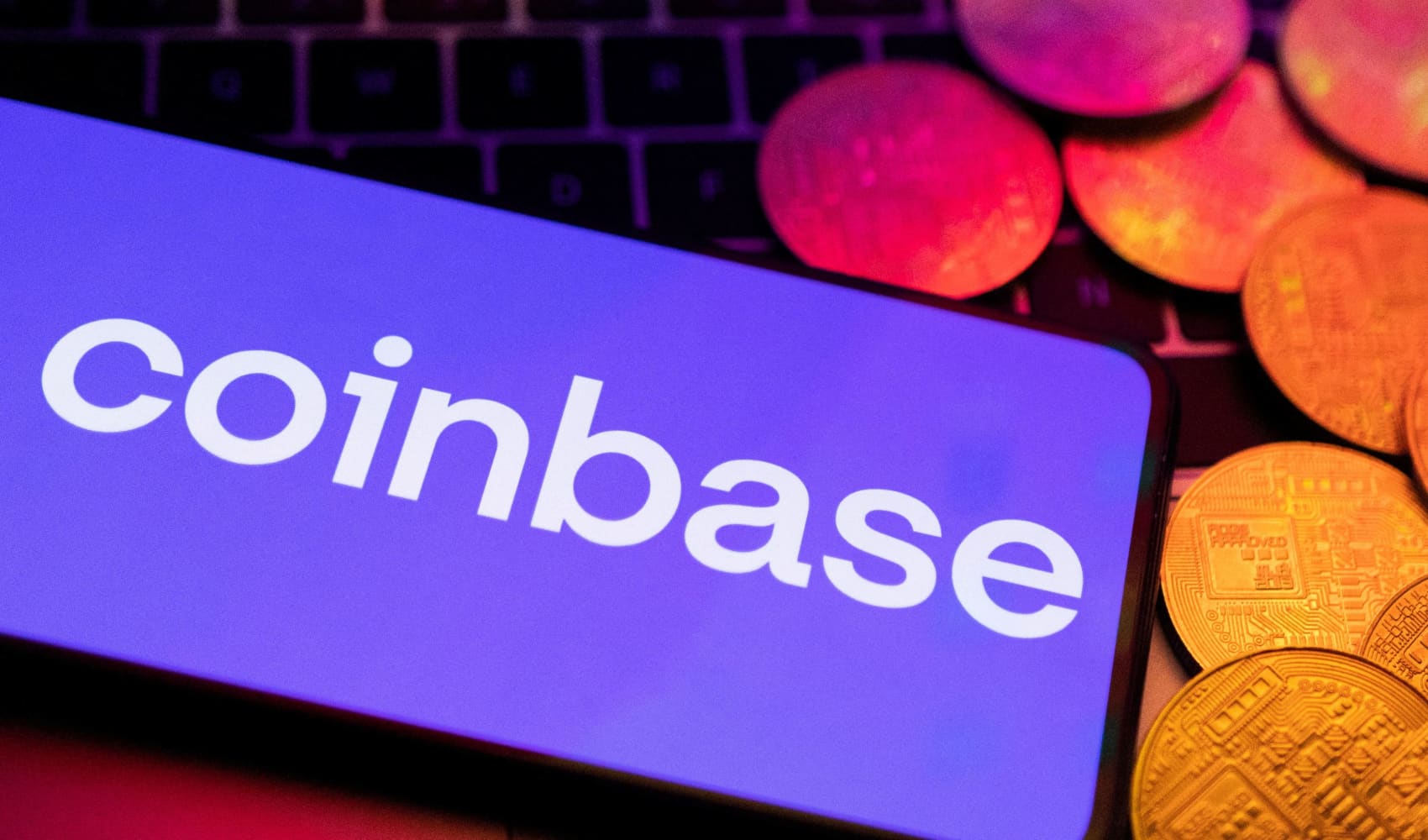Coinbase Stock Plummets: What's Behind the Miss?
Coinbase Stock Plummets: What's Behind the Revenue Miss?
Introduction: A Rocky Quarter for the Crypto Giant
Coinbase, a name synonymous with cryptocurrency trading in the US, recently released its first-quarter earnings, and let's just say the market didn't exactly pop the champagne. While stablecoin revenue showed growth, the overall picture painted a less rosy outlook, sending Coinbase shares tumbling. So, what exactly went wrong? And more importantly, what does this mean for the future of Coinbase and the broader crypto market? Let's dive in.
Coinbase's Q1 2024 Earnings: A Breakdown
The numbers tell a story, and in this case, it's a story of expectations falling short. Coinbase reported earnings of $65.6 million, or 24 cents per share, a significant drop from the $1.18 billion, or $4.40 a share, from the same period last year. Even when excluding the impact of crypto investments, the adjusted earnings of $527 million, or $1.94 per share, weren't enough to impress Wall Street.
- Earnings Per Share (EPS): $0.24 (down from $4.40 year-over-year)
- Adjusted EPS: $1.94
Revenue Realities: Missing the Mark
Revenue is the lifeblood of any company, and while Coinbase saw an increase to $2.03 billion from $1.64 billion a year ago, it wasn't enough. The consensus estimate from LSEG was a higher $2.12 billion. Falling short of analyst expectations is never a good look, and it often triggers a sell-off, which is exactly what happened here.
Transaction Revenue: The Core Business Weakens
A large chunk of Coinbase's revenue comes from transaction fees, essentially the cut they take from every buy and sell order on their platform. In Q1 2024, transaction revenue amounted to $1.26 billion. Is this figure concerning? Perhaps the bigger issue is the trend, and the following section addresses this.
Consumer Trading Volume: A Significant Dip
The company reported a 17% drop in consumer trading volume from the fourth quarter, settling at $78.1 billion. Think about it like this: if fewer people are trading, Coinbase earns less in fees. The end of last year saw elevated trading due to political events and speculation, but the market seems to have cooled off since then.
Subscription and Services Revenue: A Silver Lining?
It's not all doom and gloom for Coinbase. Subscription and services revenue, which includes things like staking rewards and custody fees, reached $698.1 million in the quarter. This suggests that Coinbase is diversifying its revenue streams, which is a smart move in the volatile crypto world. It's like planting multiple seeds; even if some don't sprout, others might thrive.
The Trump Factor: An Unpredictable Influence
The previous quarter's surge in trading activity was partially attributed to the anticipation surrounding Donald Trump's potential policies on cryptocurrency. As the company said, volume at the end of last year was elevated by the election of President Donald Trump and hopes that he would bring a more favorable regulatory environment. The crypto market is often driven by sentiment and speculation, and political events can have a significant impact.
Regulatory Uncertainty: A Persistent Headwind
One of the biggest challenges facing Coinbase, and the crypto industry as a whole, is regulatory uncertainty. Different countries (and even different states within the US) have varying approaches to regulating cryptocurrencies. This lack of clarity makes it difficult for Coinbase to operate and innovate, and it can scare away potential investors.
Coinbase's Market Position: Still a Leader?
Coinbase remains the largest cryptocurrency marketplace in the US. This is not just about bragging rights. This commanding position gives them a significant advantage in terms of brand recognition and user base. However, competitors are constantly emerging, and Coinbase needs to stay ahead of the curve to maintain its lead.
The Competitive Landscape: A Crowded Field
The cryptocurrency exchange market is becoming increasingly competitive. Binance, Kraken, and other players are vying for market share, and they're often willing to offer lower fees or more innovative products to attract customers. Coinbase needs to differentiate itself to stay competitive.
Stablecoins: A Bright Spot in the Portfolio
Understanding Stablecoin Revenue
One area of growth for Coinbase was in stablecoin revenue. Stablecoins are cryptocurrencies designed to maintain a stable value, typically pegged to the US dollar. They're often used as a way to trade cryptocurrencies without having to convert back to fiat currency. This growth indicates that Coinbase is successfully tapping into the demand for stablecoins, which are becoming increasingly important in the crypto ecosystem.
The Appeal of Stability in a Volatile Market
Stablecoins are popular because they provide a sense of stability in the often-turbulent world of cryptocurrencies. Think of them as an anchor in a storm. This stability attracts both institutional and retail investors, making stablecoins a valuable asset for Coinbase.
Looking Ahead: What's Next for Coinbase?
So, what does the future hold for Coinbase? The company faces several challenges, including regulatory uncertainty, increased competition, and volatile market conditions. However, Coinbase also has several strengths, including a strong brand, a large user base, and a diversified revenue stream. Success will depend on its ability to navigate these challenges and capitalize on its strengths.
The Broader Crypto Market: A Rollercoaster Ride
Impact on the Crypto Market
Coinbase's struggles can have ripple effects throughout the entire crypto market. The share price of the stock often serve as a proxy for the overall health of the crypto industry. A weak performance from Coinbase can dampen investor sentiment and lead to a broader sell-off in crypto assets.
The Future of Crypto Trading
The future of crypto trading is uncertain, but it's likely to be shaped by factors such as regulation, technological innovation, and institutional adoption. As the market matures, we can expect to see more sophisticated trading strategies and more institutional investors entering the space. The crypto winter is over, and the Spring has come, but Summer remains to be seen.
Conclusion: Navigating the Crypto Storm
Coinbase's recent earnings miss highlights the challenges and opportunities facing the cryptocurrency industry. While the company faces headwinds from regulatory uncertainty and increased competition, it also has strengths in its brand recognition and diversified revenue streams. The key takeaways are that Coinbase needs to adapt to changing market conditions, innovate to stay ahead of the competition, and navigate the complex regulatory landscape to achieve long-term success. The path forward won't be easy, but for those who believe in the long-term potential of cryptocurrency, it's a journey worth taking.
Frequently Asked Questions (FAQs)
Q: Why did Coinbase's stock price fall after the earnings release?
A: Coinbase's stock price fell because the company's first-quarter revenue came in below Wall Street's expectations. Investors were disappointed by the lower-than-anticipated revenue, as well as the decline in consumer trading volume.
Q: What are stablecoins, and why are they important to Coinbase?
A: Stablecoins are cryptocurrencies designed to maintain a stable value, typically pegged to the US dollar. They're important to Coinbase because they provide a sense of stability in the volatile crypto market, attracting both retail and institutional investors and generating revenue for Coinbase through trading fees and custody services.
Q: What are the biggest challenges facing Coinbase right now?
A: The biggest challenges facing Coinbase include regulatory uncertainty, increased competition from other crypto exchanges, and volatile market conditions that can impact trading volume and revenue. Navigating these challenges will be crucial for Coinbase's long-term success.
Q: How does regulatory uncertainty affect Coinbase's operations?
A: Regulatory uncertainty makes it difficult for Coinbase to operate and innovate. The lack of clear rules and regulations can create legal and compliance challenges, increase operating costs, and deter potential investors from entering the crypto market.
Q: Is Coinbase still a good investment despite the recent earnings miss?
A: Whether Coinbase is a good investment depends on individual risk tolerance and investment goals. While the recent earnings miss is a concern, Coinbase still has a strong brand, a large user base, and a diversified revenue stream. Investors should carefully consider these factors and conduct their own research before making any investment decisions.

